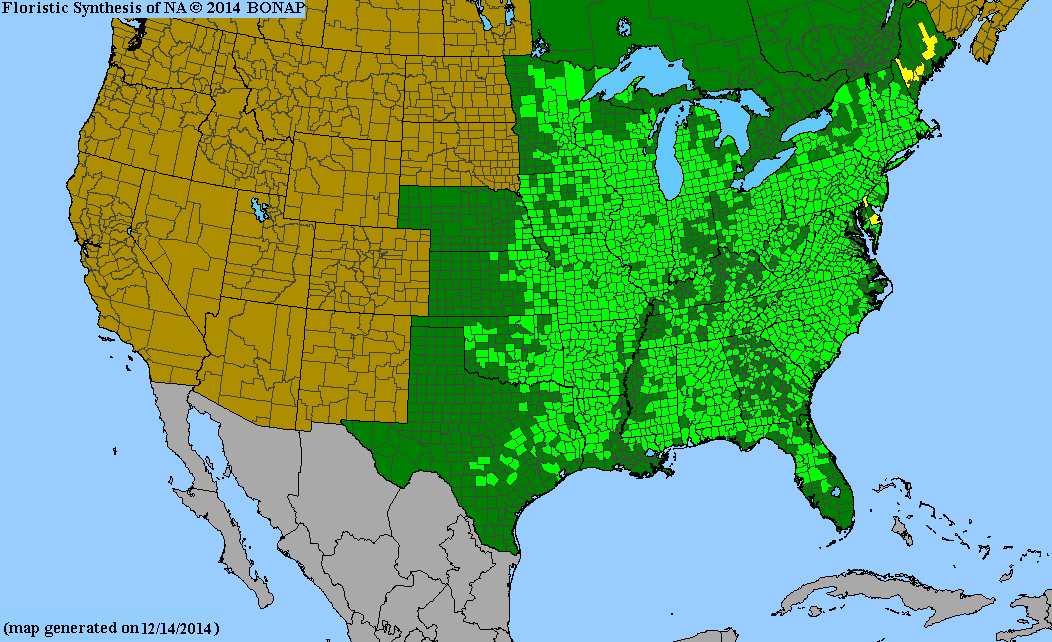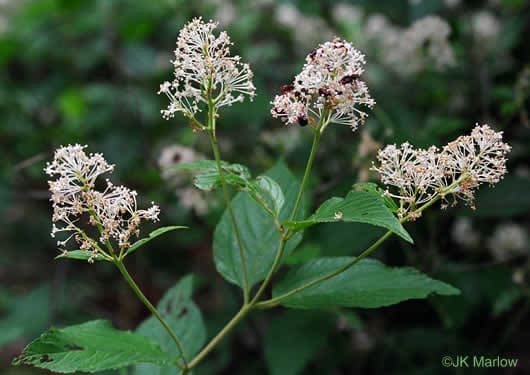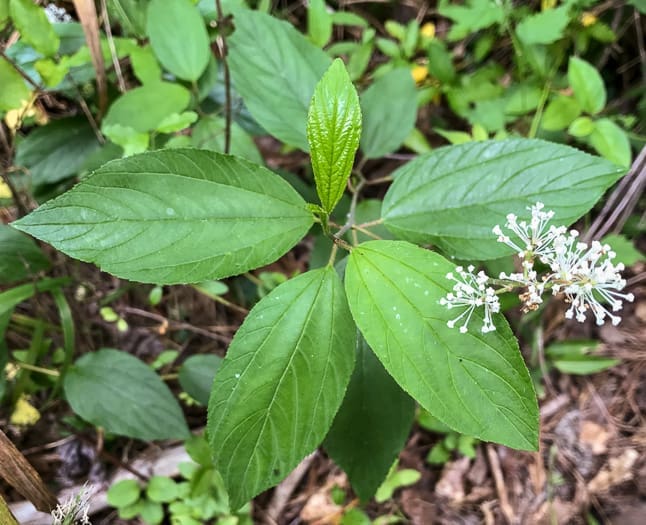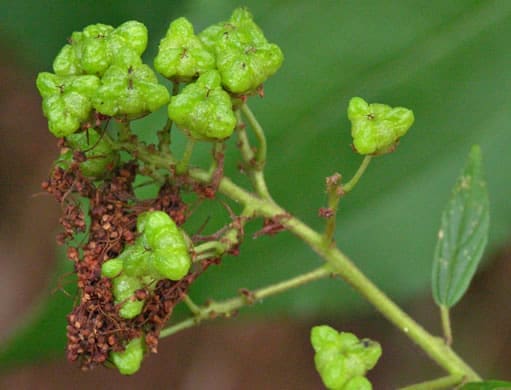Rhamnaceae
New Jersey tea
Ceanothus americanus
Other Common Names
northeastern ceanothus
Plant Type
Shrub (less than 10 ft)
Life Cycle
Perennial
Typical Size
2 - 3 ft. tall
3 - 5 ft. wide
Tolerant of
Drought, Salt Exposure
Inolerant of
Poorly Drained Soil
Plant Propagation Notes
Can be propagated by seed, and cuttings of soft or semi-hardwood.
Seeds may need scarification and soaking. They also need a 60 – 90 day stratification.
Plant Planting Notes
This plant can be difficult to transplant due to its deep root system.
Plants/Diseases
It is susceptible to leaf spot, powdery mildew, and root rot (in wet soil).
Wildlife Benefits
Nectar/pollen source for pollinating insects, Host plant for butterfly larvae
Leaves
Leaves are simple, entire, alternate, oblong to ovate, and feel rough They are 3 – 6 inches long and 1 – 3 inches wide. The fall color is gold/yellow.
Flowers
The flower panicle consists of many small cream/tan, pink, or white flowers. The flowering period is typically from May to June.
Fruit
The small, 3-lobed seed capsules mature to dark brown/black and are present in the summer.
Bark
The bark is dark brown.
Toxicity
No known toxicity.
Edibility
The dry leaves can be used to make a tea.
Ethnobotanical Use
Native Americans used it to treat respiratory infections as a tea.

USDA Hardiness Zones
4, 5, 6, 7, 8
Light Exposure
Full Sun, Part Sun/Shade
Soil Moisture
Dry, Medium
Soil Drainage
Well-drained
Soil pH
Neutral (6.0-8.0), Basic (greater than 8.0)
Native in South Carolina?
Yes
Plant Native Habitat
Occurs in open deciduous forests, forest edges, and meadows.
Global Conservation Status (NatureServe)
Secure (G5)
Federal Conservation Status (USFWS)
Not Listed
Distribution Notes
New Jersey tea can be found throughout South Carolina.
Subspecies
Ceanothus americanus var. americanus
Ceanothus americanus var. intermedius



